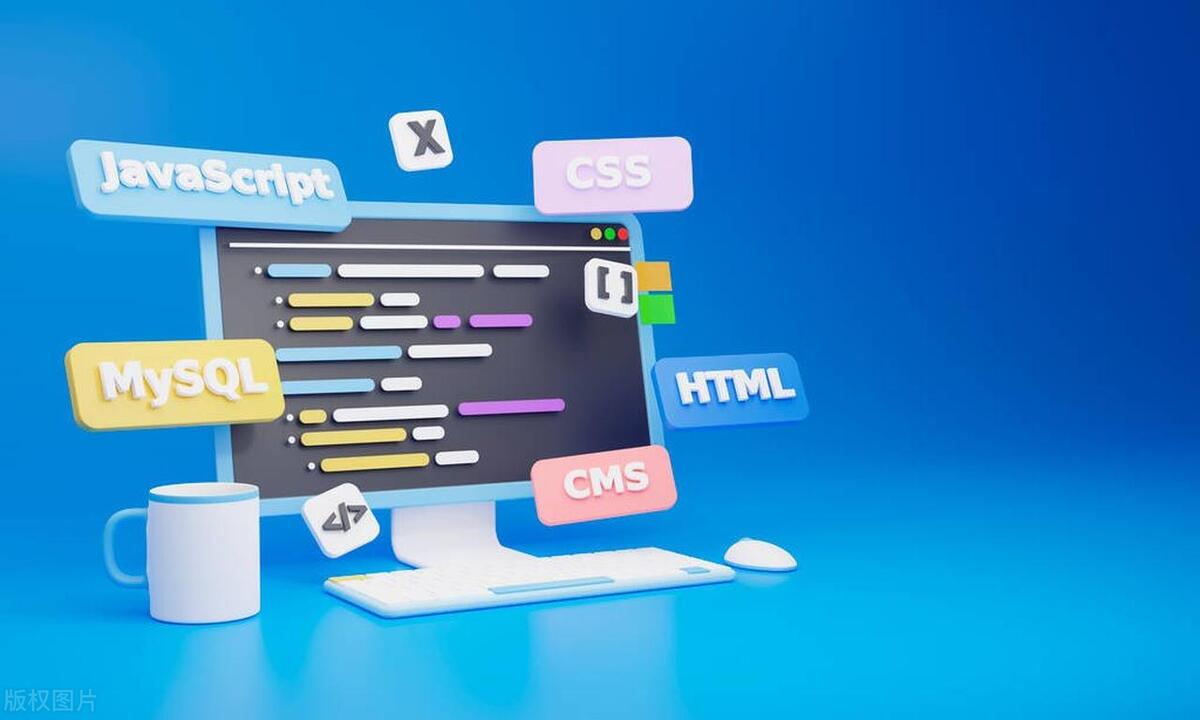The Future of Frontend Development: Trends and Predictions
Jul 20, 2025 am 02:41 AMFuture trends in front-end development include: 1. Component-driven development becomes standard and becomes smarter; 2. AI becomes a daily tool; 3. Performance and accessibility are no longer ignored; 4. Blur the boundaries of the front and back ends; 5. Web standards are constantly evolving. Component-driven development improves collaboration and reuse efficiency through tools such as Storybook and Bit; AI tools such as GitHub Copilot speed up coding and reduce errors; performance optimization and accessibility are being integrated into the development process earlier; frameworks such as Next.js make front-end and back-end convergence more natural; new Web API and CSS features improve native support capabilities and reduce dependencies. These trends indicate that front-end development is moving towards more efficient, smarter and higher quality.

Frontend development is evolving fast, and staying updated isn't optional anymore. Whether you're a seasoned developer or just starting out, understanding where the frontend world is heading can help you stay ahead of the curve. Let's break it down into the key trends shaping the future.

1. Component-Driven Development Is the Standard (and It's Getting Smarter)
We've long moved past building entire pages from scratch every time. Component-driven development, especially with frameworks like React, Vue, and Angular, is now the norm. But it's not just about reusability anymore — it's about smarter composition.
Tools like Storybook and Bit are making it easier to build, test, and share components across teams and projects. And with the rise of design systems , frontend developers are working more closely than ever with designers to ensure consistency and efficiency.

A real-world example: Imagine building a button once and reusing it across multiple apps, with variations controlled through props and design tokens.
What's next? Expect to see more intelligent component systems that adapt automatically based on context, user preferences, or even AI suggestions.

2. AI Is Becoming a Daily Tool, Not Just a Buzzword
AI isn't replacing developers — yet. But it's becoming a powerful assistant in everyday workflows. Tools like GitHub Copilot, Tabnine, and even AI-powered design generators are helping frontend developers write code faster and with fewer errors.
Here's how AI is helping right now:
- Auto-generating UI components from design files or simple prompts
- Suggesting optimized CSS and responsive layouts
- Helping debug and reflector code
- Assisting in accessibility improvements
For example, you can describe a layout in plain English, and an AI tool might generate a basic HTML/CSS structure for you.
The key is not to rely on AI blindly, but to use it as a productivity booster — like a smart autocomplete that understands context.
3. Performance and Accessibility Are No Longer Afterthoughts
As frontend apps get more complex, performance and accessibility are becoming critical. Users expect fast, smooth experiences, and search engines reward well-optimized sites.
What's changing:
- More emphasis on Core Web Vitals and real-user monitoring
- Frameworks like Next.js and SvelteKit baking performance into defaults
- Accessibility (a11y) being integrated earlier in the development process
A common issue: Developers often forget to test keyboard navigation or screen reader compatibility until late in the process.
Best practices are shifting from "nice to have" to "must have." You'll want to:
- Use semantic HTML by default
- Optimize images and assets early
- Lazy-load components and routes
- Test with real assistive tools
4. The Line Between Frontend and Backend Is Blurring
Full-stack development is becoming more accessible, thanks to tools like Next.js , SvelteKit , and Nuxt.js . These frameworks let you mix frontend and backend logic without switching contexts or environments.
This trend means:
- Fewer API-only frontend apps
- Server components and edge functions becoming more common
- Easier deployment with serverless functions and edge computing
For instance, you can fetch data directly in a React component using
async/awaitwithout setting up a separate backend route.
This doesn't mean backend developers are obsolete — far from it. But frontend developers are now expected to understand and work with backend concepts more fluently.
5. Web Standards Are Evolving — and Browsers Are Catching Up
New web APIs and CSS features are being adopted faster than ever. Features like container queries, cascade layers, and native :has() selectors are making complex layouts and styling easier without extra JavaScript.
Also, frameworks are starting to support these features out of the box, reducing the need for third-party libraries. This leads to lighter, more maintained codebases.
Example: Using CSS
@containerinstead of a JavaScript-based media query system.
Staying updated on what's natively supported can save time and reduce dependencies — which is always a win.
So yeah, the future of frontend dev is all about smarter tooling, better collaboration, and a focus on quality from day one. It's not about learning every new framework that pops up — it's about understanding the fundamentals and knowing where to apply them.
Basically that's it.
The above is the detailed content of The Future of Frontend Development: Trends and Predictions. For more information, please follow other related articles on the PHP Chinese website!

Hot AI Tools

Undress AI Tool
Undress images for free

Undresser.AI Undress
AI-powered app for creating realistic nude photos

AI Clothes Remover
Online AI tool for removing clothes from photos.

Clothoff.io
AI clothes remover

Video Face Swap
Swap faces in any video effortlessly with our completely free AI face swap tool!

Hot Article

Hot Tools

Notepad++7.3.1
Easy-to-use and free code editor

SublimeText3 Chinese version
Chinese version, very easy to use

Zend Studio 13.0.1
Powerful PHP integrated development environment

Dreamweaver CS6
Visual web development tools

SublimeText3 Mac version
God-level code editing software (SublimeText3)
 How does React handle focus management and accessibility?
Jul 08, 2025 am 02:34 AM
How does React handle focus management and accessibility?
Jul 08, 2025 am 02:34 AM
React itself does not directly manage focus or accessibility, but provides tools to effectively deal with these issues. 1. Use Refs to programmatically manage focus, such as setting element focus through useRef; 2. Use ARIA attributes to improve accessibility, such as defining the structure and state of tab components; 3. Pay attention to keyboard navigation to ensure that the focus logic in components such as modal boxes is clear; 4. Try to use native HTML elements to reduce the workload and error risk of custom implementation; 5. React assists accessibility by controlling the DOM and adding ARIA attributes, but the correct use still depends on developers.
 Server-Side Rendering with Next.js Explained
Jul 23, 2025 am 01:39 AM
Server-Side Rendering with Next.js Explained
Jul 23, 2025 am 01:39 AM
Server-siderendering(SSR)inNext.jsgeneratesHTMLontheserverforeachrequest,improvingperformanceandSEO.1.SSRisidealfordynamiccontentthatchangesfrequently,suchasuserdashboards.2.ItusesgetServerSidePropstofetchdataperrequestandpassittothecomponent.3.UseSS
 A Deep Dive into WebAssembly (WASM) for Front-End Developers
Jul 27, 2025 am 12:32 AM
A Deep Dive into WebAssembly (WASM) for Front-End Developers
Jul 27, 2025 am 12:32 AM
WebAssembly(WASM)isagame-changerforfront-enddevelopersseekinghigh-performancewebapplications.1.WASMisabinaryinstructionformatthatrunsatnear-nativespeed,enablinglanguageslikeRust,C ,andGotoexecuteinthebrowser.2.ItcomplementsJavaScriptratherthanreplac
 How to manage component state using immutable updates in React?
Jul 10, 2025 pm 12:57 PM
How to manage component state using immutable updates in React?
Jul 10, 2025 pm 12:57 PM
Immutable updates are crucial in React because it ensures that state changes can be detected correctly, triggering component re-rendering and avoiding side effects. Directly modifying state, such as push or assignment, will cause React to be unable to detect changes. The correct way to do this is to create new objects instead of old objects, such as updating an array or object using the expand operator. For nested structures, you need to copy layer by layer and modify only the target part, such as using multiple expansion operators to deal with deep attributes. Common operations include updating array elements with maps, deleting elements with filters, adding elements with slices or expansion. Tool libraries such as Immer can simplify the process, allowing "seemingly" to modify the original state but generate new copies, but increase project complexity. Key tips include each
 Security Headers for Frontend Applications
Jul 18, 2025 am 03:30 AM
Security Headers for Frontend Applications
Jul 18, 2025 am 03:30 AM
Front-end applications should set security headers to improve security, including: 1. Configure basic security headers such as CSP to prevent XSS, X-Content-Type-Options to prevent MIME guessing, X-Frame-Options to prevent click hijacking, X-XSS-Protection to disable old filters, HSTS to force HTTPS; 2. CSP settings should avoid using unsafe-inline and unsafe-eval, use nonce or hash and enable reporting mode testing; 3. HTTPS-related headers include HSTS automatic upgrade request and Referrer-Policy to control Referer; 4. Other recommended headers such as Permis
 What are custom data attributes (data-*)?
Jul 10, 2025 pm 01:27 PM
What are custom data attributes (data-*)?
Jul 10, 2025 pm 01:27 PM
The data-* attribute is used in HTML to store additional data, and its advantages include that the data is closely related to elements and comply with HTML5 standards. 1. When using it, name it starts with data-, such as data-product-id; 2. It can be accessed through JavaScript's getAttribute or dataset; 3. Best practices include avoiding sensitive information, reasonable naming, paying attention to performance and not replacing state management.
 Applying CSS Styles to Scalable Vector Graphics (SVG)
Jul 10, 2025 am 11:47 AM
Applying CSS Styles to Scalable Vector Graphics (SVG)
Jul 10, 2025 am 11:47 AM
To style SVGs using CSS, you first need to embed SVGs inline into HTML for fine control. 1. Inline SVG allows its internal elements such as or to be directly selected through CSS and to apply styles, while external SVG only supports global styles such as width and height or filters. 2. Use regular CSS syntax such as .class:hover to achieve interactive effects, but use fill instead of color to control the color, and use stroke and stroke-width to control the outline. 3. Use class names to organize styles to avoid duplication and pay attention to naming conflicts and scope management. 4. The SVG style may be inherited from the page, and can be reset through svg*{fill:none;stroke:none;} to avoid
 How to add a favicon to a website?
Jul 09, 2025 am 02:21 AM
How to add a favicon to a website?
Jul 09, 2025 am 02:21 AM
Adding website Favicon requires preparing icon files, placing the correct path and quoting them. 1. Prepare multi-size .ico or .png icons, which can be generated by online tools; 2. Put favicon.ico in the website root directory; 3. If you need to customize the path or support more devices, you need to add a link tag reference in the HTMLhead; 4. Clear the cache or use the tool to check whether it is effective.






